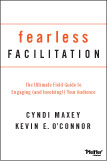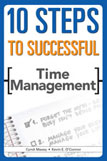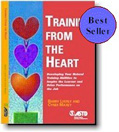Articles
Colorize the Shades of Gray: A Look at Consultant–Client Ethics
August 20, 1997
by Cyndi Maxey
0 Comment
By Cyndi Maxey and Debbie Ahlers
Like many independent consultants in the training and development field, we each own businesses, yet often have opportunities to collaborate. Shortly after we met five years ago, we drew up a contract with each other to set expectations for the co-authorship and co-facilitation of a series of employee development courses for a mutual client. In the process of wording our agreement, we became amused by the situation; neither of us had a legal, fair, ethical model to use as a foundation, so we “made one up.” Today, our professional relationship builds on the trust earned from that initial “made-up” agreement.
As we continue to collaborate, we often need to discuss ethical issues. From our conversations with colleagues and clients, we know that they are also concerned about the ethics of the consultant–client relationship and the shades of gray therein. To begin to take a local look at consultant–client ethics, we interviewed four experienced Chicago area consultants and five experienced clients—buyers of training services—all local CCASTD members. To determine an interview scope, our initial research revealed two excellent resources on ethics in our field: “Models for HRD Practice,” and “Ethics in Training and Development.” Continue Reading →
How to Turn Your Expertise As a Contractor into a Speech
Special to CONTRACTOR
If you have ever been asked to speak to a group and declined because you felt fearful or unprepared, you are like the majority of today’s professionals. Yet, groups and meeting planners continuously look for qualified speakers, often without much advance notice. This is what happened to a longtime Texas cattle rancher, Mary Sue Koontz Nelson.
A local community leader asked her to tell her stories to a group of friends she was having over for lunch. Nelson accepted the challenge and wrote a speech about her life on the HK Ranch. The group of friends turned out to be 1,800 people at a large hotel. As it turns out, Nelson and her stories about being a ranch owner and bull breeder became highly sought after.
Most people don’t lead exciting, celebrity-filled lives on a ranch with cowboys, rodeos and Argentine millionaire bull buyers. However, most people do accumulate memorable life and work experiences. Continue Reading →
As the Cookie Crumbles…So Can Your Warm-up
Reprinted from SemiNews and Views, a newsletter published by National Speakers Association, April 1997.
Imagine you’ve just attended a wedding. You’ve come alone. Now you find yourself at the cocktail reception before dinner, chatting with the stranger standing next to you. You both agree that it was a lovely wedding. The bride was beautiful. The groom was appropriately nervous. You spend the next 45 minutes being as interesting and as charming as it is humanly possible for you to be. You have pulled out your business card and all the stops. Finally, there is nothing left for you to say.
Suddenly, the doors to the dining room open, and you both reach into your pockets for your table assignment cards. Surprise! You are both at TABLE 19. Summoning your energy, you realize that the conversational evening has just begun.
If I Can Just Make it to the First Break
Imagine you’ve been to a wedding ceremony. You’ve come alone. Now you find yourself at the cocktail hour of the wedding reception. You’re chatting with the person you’re standing next to. You both agree it was a lovely wedding. The bride was beautiful. The groom was appropriately nervous. The music was an intriguing blend of traditional and new wave. You spend the next 45 minutes being as interesting and as charming as it is humanly possible for you to be. You have pulled out not only your business card but all the stops. There is nothing left for you to say. The doors to the dining room are opened and you both reach into your pockets to pull out your table assignment cards. Surprise! You are both at TABLE 19. Summoning your charm and energy, you realize that for you and your new friend, the evening has just begun.
The first minutes of a full-day seminar are similar in many ways. You need to be personable and charming and set the stage and the climate, yet also build a solid platform for the day—a platform of credibility for the topic and for yourself. You’re in the race, not just for the sprint, but for the long-distance run. In developing and presenting a new seminar, I still spend the most time on the first 90 minutes. I find myself thinking “If I can just make it to the first break…,” the rest of the day will come together. Continue Reading →
Margin Notes
I remember Miss Bernadette Sperling, my high school English teacher, warning, “Do not write in the margin. Keep your work neat and clean and easy to read.†(This was, of course, in the days when we still wrote reports in long-hand.) “Neat, clean, and easy to read†rarely happens in the training classroom. Recently, one of my clients gave me an updated version of the trainer guide for a course I had been facilitating for the past year. I smiled outwardly as I accepted it, but inwardly I was panicked …. “A new clean guide! Oh no! What about all my notes—everything I’d learned?â€
Most trainers will admit to writing in the margins. Because our effectiveness is directly tied to our ability to listen to the group, we are constantly making mental and written margin notes—to keep learning energized and effective. Let’s take a look at what experienced trainers know—about energizing a group, adapting to groups, and impromptu editing. Continue Reading →
About CYNDI
Have you ever wished you had planned a bit more for that major presentation? Would you like to overcome speaking anxiety that holds you back? Could you benefit from higher level influence in front of groups? Coach Cyndi Maxey helps you answer those questions and more. She is an accomplished national speaker and communication coach who has authored six books on communication, presentations, and influence.
Books
Fearless Facilitation “How to Engage and Involve Your Audience”

Present Like a Pro: The Field Guide to Mastering the Art of Business, Professional, and Public Speaking

Speak Up! A Woman’s Guide To Presenting Like a Pro

10 Steps to Successful Time Management

It’s Your Move: Dealing Yourself the Best Cards in Life and Work

Training from the Heart: Developing your Natural Training Abilities to Inspire the Learner and Drive Performance on the Job

Focus on Fearless Facilitation

This popular and most recent book shows how to make any learning environment come alive. It outlines proven guidelines any trainer can use to unify groups, inspire creativity, and get audiences, teams, and colleagues to speak up, talk back, participate, and engage in meetings

What people are saying:
"This product is quality. I like the format."
"A lot to learn. Highly recommended"
"A Must read for Talent Development professionals."
"One of the best books on facilitation I have read"
Recent Comments
- Cyndi Maxey on PORCH STORY
- Barbara Willard on Safety Warning: May cause Loneliness or Jealousy
- Barbara Willard on PORCH STORY
- Cyndi Maxey on PORCH STORY
- Dolores Rodriguez on PORCH STORY
Contact
Phone: 773-551-9599
Email: cmaxey@cyndimaxey.com
Email: cmaxey@cyndimaxey.com
Join Our Mailing LIst
Copyright © 2025 Cyndi Maxey
